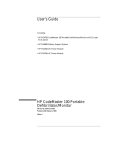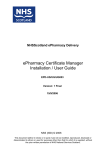Download potential power supply failure [PDF 123KB]
Transcript
HAZARD NOTICE By arrangement with the NHS in Scotland, Management Executive HEWLETT PACKARD CODEMASTER XL+, XL AND XE DEFIBRILLATOR/MONITORS : POTENTIAL POWER SUPPLY FAILURE HAZ(SC)99/03 18 AUG 1999 Medical Devices Page 1 of 2 Pages SUMMARY Some Hewlett Packard CodeMaster XL+ (M1722A/B), XL (M1723A/B) defibrillator/monitors and CodeMaster XE (M1724A) defibrillators manufactured prior to 16 June 1999 may suffer failure of the power supply. Routine operational and preventative maintenance checks should be carried out to identify faults. BACKGROUND 1. Reports have been received from users and from Hewlett Packard regarding failures of the low voltage power supply in CodeMaster XL+ (M1722A/B) and XL (M1723A/B) defibrillator/monitors. Most failures have been detected during (daily / shift) operational checks and routine preventative maintenance. In one report the power supply failed while monitoring a patient during the night, resulting in a ‘LOW BATTERY’ alarm. 2. Early stages of the failure mode can be identified by the ‘AC POWER’ and ‘BATT CHRG’ indicators taking several seconds to come on when the unit is first connected to the mains power. 3. Imminent / complete failure of the power supply can be identified while the defibrillator is in use or during required operational checks. Failure is indicated when the ‘AC POWER’ and ‘BATT CHRG’ indicators do not light when the defibrillator is connected to mains power . 4. Once the power supply has failed, the defibrillator can only operate using the battery’s existing charge. The battery will not be recharged. The ‘LOW BATTERY’ message and audible alarm should give the user sufficient time to take the defibrillator out of service. 5. Hewlett Packard are implementing reliability improvements to the CodeMaster series power supply assembly (M1722-69530). They have identified a capacitor in the mains start-up circuit that may be adversely affected by higher ambient temperatures present when connected to the higher mains voltage typically found in the UK. Over time a small number of these capacitors may fail, resulting in the symptoms described above. The latest version of the power supply has been fitted with a capacitor which is less sensitive to these higher temperatures. Revised support parts were made available and new defibrillators fitted with the upgraded power supply since 16 June 1999. ACTION 6. This notice should be brought to the attention of all appropriate managers, staff and users. Suggested Distribution Estates/Facilities Medical Electronics Risk Management Accident & Emergency General Medical Practitioners Medical Physics Safety Officers Coronary Care Units Health Centres Operating Departments Wards Device Managers Intensive Therapy Units Resuscitation Teams SCOTTISH HEALTHCARE SUPPLIES Gyle Square Edinburgh EH12 9EB A Division of the National Service Scotland for NHSScotland CONTACT EMAIL: [email protected] WEBSITE: http://www.nhsscotland.com/shs/hazards_safety/adverse_p.html FAX: 0131 314 0722 N:\WORD\HAZ\PUBLIC LIBRARY HAZ\1999 HAZ\PHAZ9903.DOC HAZARD NOTICE By arrangement with the NHS in Scotland, Management Executive HEWLETT PACKARD CODEMASTER XL+, XL AND XE DEFIBRILLATOR/MONITORS : POTENTIAL POWER SUPPLY FAILURE HAZ(SC)99/03 18 AUG 1999 Medical Devices Page 2 of 2 Pages 7. Staff should be made aware of the potential failure of the power supply in Hewlett Packard CodeMaster XL+, XL defibrillator/monitors as well as CodeMaster XE (M1724A) defibrillators. 8. The failure mode can be detected by carrying out the ‘shift’ and ‘daily’ Operational Checks stipulated by the manufacturer in their User’s Guide. It will also be detected during routine maintenance as specified in the Service Manual. The defibrillator should be connected to the mains supply to verify the following failure symptoms: a) ‘AC POWER’ and ‘BATT CHRG’ indicators remain OFF, or b) ‘AC POWER’ and ‘BATT CHRG’ indicators remain OFF for several seconds and then turn ON (slow start-up) 9. If any of the above symptoms are detected and the integrity of the power supply cord and mains supply is confirmed, the defibrillator power supply is likely to be faulty. The defibrillator should be removed from use if possible, until a replacement power supply can be fitted. If the defibrillator has to remain in use for monitoring purposes, clinical staff should remain in close proximity in order to be able to receive audible and visual ‘LOW BATTERY’ alarms. 10. If failure symptoms are not present, the required Operational Checks and routine preventative maintenance should continue to be carried out. These procedures include those necessary to ensure that CodeMaster batteries are kept fully charged and maintained. 11. The Hewlett Packard Healthcare Response Centre should be contacted at the address given under Enquiries to arrange for replacement of power supply assemblies. ENQUIRIES Enquiries to the manufacturer and requests for replacement power supply assemblies should be addressed to : Mr Brian Wood Hewlett Packard Ltd. Cain Road Bracknell Berks RG12 1HN Tel: 01344 366333 HP Healthcare Response Centre Fax: 01344 361607 SCOTTISH HEALTHCARE SUPPLIES Gyle Square Edinburgh EH12 9EB A Division of the National Service Scotland for NHSScotland CONTACT EMAIL: [email protected] WEBSITE: http://www.nhsscotland.com/shs/hazards_safety/adverse_p.html FAX: 0131 314 0722 N:\WORD\HAZ\PUBLIC LIBRARY HAZ\1999 HAZ\PHAZ9903.DOC


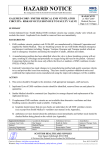
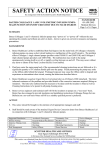
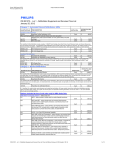
![Lifts Part 4: Operational Management [PDF 707Kb]](http://vs1.manualzilla.com/store/data/006003154_1-8f988a4c31a2e96372488ae8439271db-150x150.png)
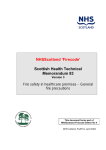
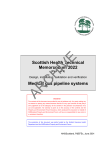
![General design guidance [PDF 950KB]](http://vs1.manualzilla.com/store/data/005804077_1-5fec14441b6361d04901f77e13b8a9c0-150x150.png)
